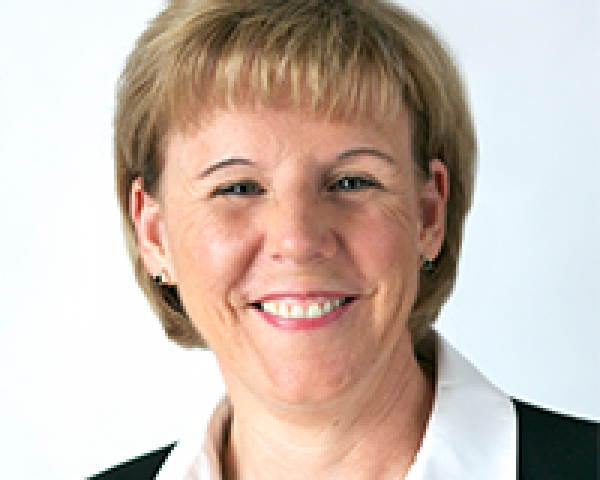In the 1920s, Hollywood had a pretty good grasp of what it took to be a leading lady. She had to be able to use exaggerated gestures and facial expressions to convey what was going on without the benefit of sound, and she had to look attractive onscreen. Nobody cared what her voice sounded like – and then came the talkies.
Suddenly, the established actors and actresses had to learn brand new skills and adapt to a new paradigm, because no movie studio was going to continue putting out silent movies when the other studios were putting out talkies. Some stars did well, like Mary Pickford, a silent film star who won an Oscar for her first speaking role. And then there were actresses like Jean Hagen, playing Lina Lamont in "Singing in the Rain," who sounded like someone stepping on a rubber ducky that had a head cold. Even for the film stars who successfully made the transition, moving from silent movies to talkies was a challenge unlike anything faced before.
Every industry encounters these moments, although some are not as obvious as the talkie revolution. The good news is that insurers, as a whole, are starting to execute on their transformation paths. Customer service is improving, business models are morphing, products are becoming more sophisticated and the core systems that support the full breadth of the company’s business are changing – and all these changes continue to accelerate.
As I mentioned in our last core blog, SMA’s recent research on policy administration systems found that 94% of insurers require robust configuration capabilities from a new PAS, because these capabilities provide the foundation for the ability to increase speed to market and speed to service, and solution providers have gotten the message. There are more and more systems on the market that are adopting these dynamic configuration capabilities. In fact, they have now become table stakes when core systems are replaced.
But there needs to be a transformation of the full core, including people and processes – not simply a system replacement project. The full core transformation includes modern policy, billing and claims systems, advancing business capabilities and an adaptive and agile organization.
Among the important ingredients for organizational transformation are the ability to adjust to required new skills, to determine where these skills will be located in the organization and to decide how the delivery of product changes will occur. For example, will you rely on the technology alone to create the differentiation, or will you adjust the organization and the skills? The new configuration capabilities can be used by people who have been trained as business analysts – and these resources are often in short supply at most companies. I have experienced demos where I hear that the configuration capabilities can be used by the business professionals to expedite product deployment. The assumption is that there are resources available in the business to perform this work. In many cases, the reality is that the business does not have the skills, processes or time to perform this work.
Often, the technical areas do have the process and some of the necessary resources, but, if the work shifts to the technical side of the business, then the IT pipeline is just being filled with the same volume of change requests that existed in the past. This is the Gordian knot that must be worked through. Insurers that have previously dealt with forms and rating engines have figured this out – they have a handle on reality and how to manage it. Many have reorganized to centralize the resources that will perform these services. They have architects that understand the hazards of configuration and can help create the "bumper guards" that are necessary to ensure success.
In SMA’s research note,
Policy Administration: P&C Plans and Priorities, 52% of insurers stated that it was difficult to find the right mix of business and technical skills to work on the configuration capabilities provided by modern policy, billing and claims systems. New skill sets are required to fully capitalize on the advantages of responsive and agile product development – new hybrid skill sets that include a combination of business analyst skills and an understanding of technical principles. Some insurers use business analysts. Others turn to IT users who have a strong understanding of business capabilities. In today’s environment, there are not many resources that meet these qualifications. Companies that are investing in training are advancing quickly.
A certain flexibility is inevitably needed to cultivate these truly skilled configurators. Insurance companies are organized around yesterday’s capabilities. Insurers need the ability to shift staff between departments – to create new working groups, to manage new priorities, to adapt to new business processes and to engage new skill sets. This flexibility equips an insurer to seize opportunities in the market, establish new modes of customer service and build business models that deliver value-added services that extend well beyond reaction and restoration.
The whole point of core transformation is that changes at the micro level can be used as a stimulus for changes at the macro level. Organizations able to address the technical and business capabilities that transformation demands can also make organizational shifts with enormous impacts. The key is to recognize that you must use some creativity and be willing to take some risks by challenging long-established traditions.

There is a happy ending to "Singing in the Rain," and it is not through the solution that Jean Hagen’s studio recommends – that being traditional diction training. Jean finds that what she does best, using her unique voice, leads her down the road to success in the new world of the talkies. In the transformative new world, insurers can also find their own road to success, heading toward the ultimate goal of becoming a Next-Gen Insurer. Core transformation, with its combination of synergistic organizational, business and technical capabilities, is a key ingredient to getting there.
 There is a happy ending to "Singing in the Rain," and it is not through the solution that Jean Hagen’s studio recommends – that being traditional diction training. Jean finds that what she does best, using her unique voice, leads her down the road to success in the new world of the talkies. In the transformative new world, insurers can also find their own road to success, heading toward the ultimate goal of becoming a Next-Gen Insurer. Core transformation, with its combination of synergistic organizational, business and technical capabilities, is a key ingredient to getting there.
There is a happy ending to "Singing in the Rain," and it is not through the solution that Jean Hagen’s studio recommends – that being traditional diction training. Jean finds that what she does best, using her unique voice, leads her down the road to success in the new world of the talkies. In the transformative new world, insurers can also find their own road to success, heading toward the ultimate goal of becoming a Next-Gen Insurer. Core transformation, with its combination of synergistic organizational, business and technical capabilities, is a key ingredient to getting there.
 There is a happy ending to "Singing in the Rain," and it is not through the solution that Jean Hagen’s studio recommends – that being traditional diction training. Jean finds that what she does best, using her unique voice, leads her down the road to success in the new world of the talkies. In the transformative new world, insurers can also find their own road to success, heading toward the ultimate goal of becoming a Next-Gen Insurer. Core transformation, with its combination of synergistic organizational, business and technical capabilities, is a key ingredient to getting there.
There is a happy ending to "Singing in the Rain," and it is not through the solution that Jean Hagen’s studio recommends – that being traditional diction training. Jean finds that what she does best, using her unique voice, leads her down the road to success in the new world of the talkies. In the transformative new world, insurers can also find their own road to success, heading toward the ultimate goal of becoming a Next-Gen Insurer. Core transformation, with its combination of synergistic organizational, business and technical capabilities, is a key ingredient to getting there.






